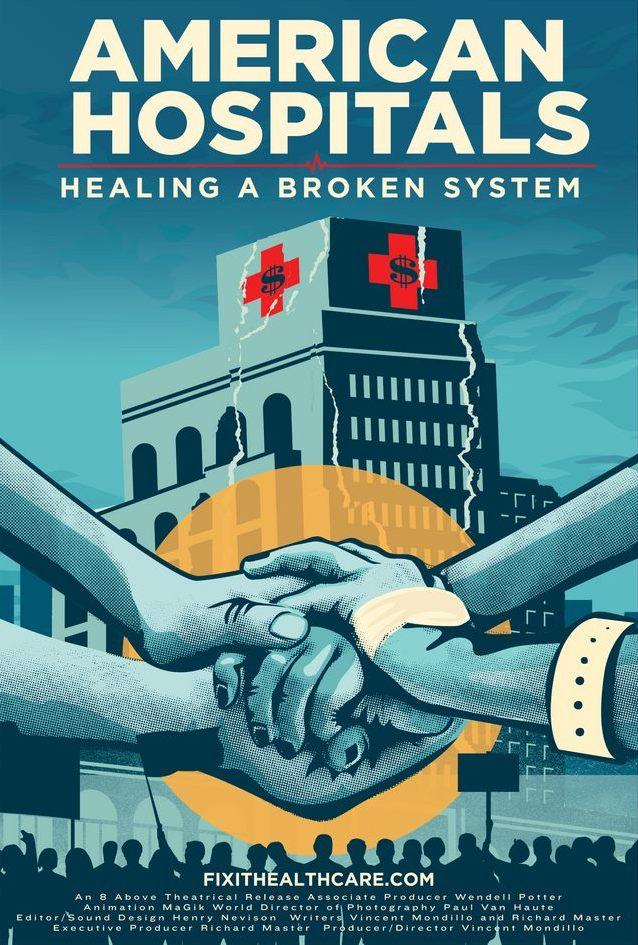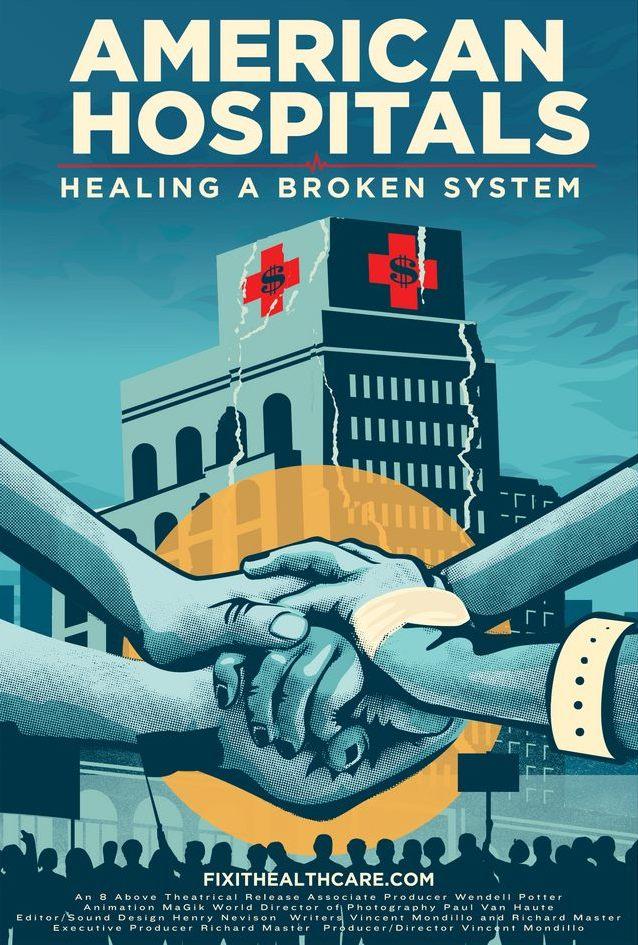A nursing home cook was excited about creating the day’s menu for his elderly residents. All of a sudden, he blacked out. The next thing he remembered was waking up in the hospital from a medically induced coma to a $20,000 out-of-pocket charge.
“Me and my wife were trying to have kids, and one of the major things I took into consideration is what would happen if I just passed away, leaving her with all of my medical debt?” the man said.
Stories like this happen throughout the United States, and many of them are portrayed in “American Hospitals: Healing a Broken System,” which has its Washington, D.C. premiere March 29. The movie highlights how healthcare is no longer viewed as a public good, but rather as a for-profit commodity.
“The business model is not based on providing care; it’s based on making money,” a narrator in the movie described. “Hospitals have actually been the largest consistent growth in healthcare spending in the past decade. We’ve basically allowed hospitals to become massive businesses.”

One of the main problems with modern healthcare depicted in the movie is that the disparities in procedural cost don’t make sense. Generally, when someone pays for something like a car, they expect a higher-priced car to perform better. However, the same model is not applicable in the healthcare field, as there can be great discrepancies in price from location to location.
“We don’t have strong evidence about a price/quality relationship in healthcare,” a narrator in the movie said. “But treating COPD, or chronic obstructive pulmonary disease, will cost you $7,000 in the Bronx. Thirty miles away, in New Jersey, it’s almost $100,000.”
However, the rising cost of procedures in the healthcare industry has not been coupled with an increase in insurance coverage, as insurance companies often pass off their increased costs to customers. According to the movie, a survey performed by the Kaiser Family Foundation found that 87% of CEOs believe the cost of providing comprehensive employee insurance is unsustainable.
The movie focuses its attention on Maryland and how the Department of Health is shifting the focus of health care from a business opportunity back to patient care.
“The mayor of Maryland has done one thing that is very desirable. There is no situation where one health plan pays more or less than another health plan for an appendectomy that costs $10,000 at Johns Hopkins,” a person said in the movie.
One step Maryland has taken toward reducing the cost of healthcare is allowing all hospitals to treat all patients. Traditionally, most states have safety-net hospitals that primarily treat low-paying Medicaid patients and nonpaying, uninsured patients. These hospitals are mostly funded by taxpayers and play a vital role in caring for those with disadvantaged backgrounds, but are severely limited in the resources they can provide due to the limited funding they receive.
“I love working in a safety-net hospital,” a hospital employee said in the movie. “I could have worked in a different hospital that had more resources, but I wanted to stay with patients that looked like me and I look like them. But when you can only give the minimum, that doesn’t feel good. It doesn’t feel good at all.”
Maryland now has a special financing system that ensures all hospitals in the state are paid the same for each procedure, regardless of their patients’ insurance coverage or ability to pay. This ensures that hospitals don’t lose money when treating Medicaid or uninsured patients.
Maryland is also the only state that has managed to maintain a cap on hospital spending, as Maryland hospitals take in only a set amount of money per year from procedures based on the population they serve. The only way for hospitals to increase the cap is to meet certain quality objectives. By providing financial incentives for reducing patient complications and infection rates, Maryland has started to improve healthcare for all.
According to the movie, Maryland’s revolutionary healthcare system has allowed the state, and the country, to finally improve the flawed healthcare system they have.
“Every other industrialized country regards healthcare as a public good,” a narrator in the movie said. “And in the non-system we have in this country, we spend way more money on high-tech care, expensive care, and way less money on primary care. Maryland is a work in progress, they’re in the early stages of changing the financial incentives that motivate hospitals, Maryland is moving in a positive direction.”









